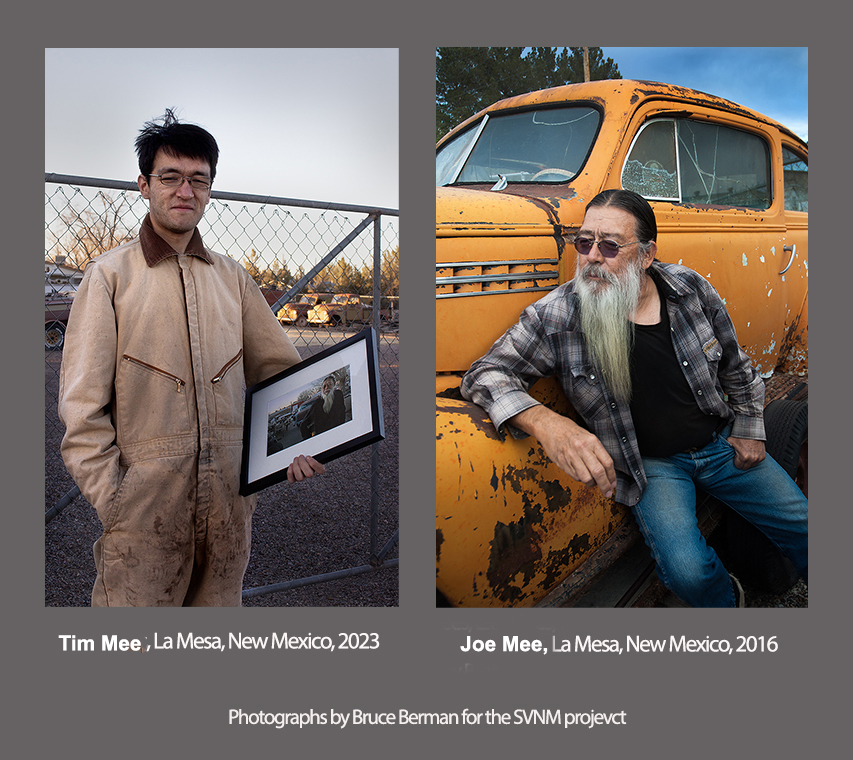Right there, right in La Mesa, New Mexico, four days ago, is the lesson on why we do DOCUMENTARY PHOTOGRAPHY!
My documentary photography class at New Mexico State University (NMSU) has been doing a project for the past twelve years, the Small Village New Mexico project (SVNM), documenting the small villages in southern New Mexico.
One of the students’ favorites towns is La Mesa. Probably because there has been one guy, Joe Mees, who rebuilds cars and Harleys, and has always been very welcoming to the students. It doesn’t hurt that he looks very cool!
Last Thursday, we met Tim Mees, Joe’s son.. He told us of that “Joe has been bed-ridden for about a year.”
He always let us into his world and gave us an insight into his small village. He was kind, patient and very thoughtful, and he knew our project had meaning.
And now, it seems, he has passed all that to his son Tim.
Documentary photography is based upon the idea that doing it preserves the past and makes the present more understandable
I -and past SVNM documentarians- have had the privilege of witnessing the torch of one generation pass from father to son in the exact same location; La Mesa.
Future viewers of our work will know the Mees’ and what La Mesa was like in the past.
I used to put on my Syllabus a statement that came from my heart and was kind of my conclusion of what documentary is. I stopped doing that. It seemed like a little too much to lay on students at this stage of their photography careers. Maybe it could matter to you now after our experiences in this semester’s intense project.
The statement is (and was):
“I want you to use photography as an instrument of education -not self expression- so you will have a chance to matter in our society.”
That is the core of documentary!
The photographs one makes, particularly photographs of people like Joe and Tim Mees matter. They matter because the bulldozer of “progress” will soon overtake places like La Mesa. They matter because fine people (and even not so fine people) need to be remembered, their life stories told. It matters because they will always be there, they don’t disappear in a 24/7 news cycle, people can study them, use it, enjoy them, learn from them.
I’m really pleased that my students got to meet Tim, make photographs of him and the wonders of their car yard. Although Joe is ailing. he was nearby. The son has carried on the tradition of the class’ project.
As photographers, we’re “takers.” Yes, takers … but with a good purpose, but takers nonetheless. The act of giving back documentary photography is part of the process. We’re doing it with an exhibition and a book that will conclude this semester. Our mission is to transfer information from subject to -hopefully- interested consumers of our work, work that we think is important, meaningful to our society, enriching and, of course, always joyful to do (there is a discussion about this is in my TEDx Talk: https://youtu.be/Xb64fS5e8tw .Links to an external site.
I’m glad this generation of students finds it relevant to do documentary still photography.

